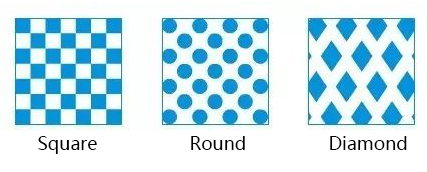Veteran prepress experts' knowledge of dot properties
Release Time:
12 May,2025
The dot is the basic unit that expresses the changes in the hierarchy of the continuous image, and is the basis for forming the printed image. It plays the role of conveying the layout tone. The status (size and shape) and behavioral characteristics of the dots will affect whether the final print can correctly restore the original tone and color changes. This article will ask senior prepress experts to share their interpretation of the four attributes of outlets.
The dot is the basic unit that expresses the changes in the hierarchy of the continuous image, and is the basis for forming the printed image. It plays the role of conveying the layout tone. The status (size and shape) and behavioral characteristics of the dots will affect whether the final print can correctly restore the original tone and color changes. This article will ask senior prepress experts to share their interpretation of the four attributes of outlets.
Door size
The size of the outlet is determined by the coverage rate of the outlet, also known as the outlet area rate. Generally used as "Cheng". 10% of outlets are called "10%", 20% are called "20%", and so on.

Before color separation, first confirm the number of points at a certain point. The number of outlets can be determined using a density meter: first determine the integral density of the outlet, and then convert it into a percentage of the outlet area. This method is more scientific.
Another method of measuring the number of outlets is to visually measure the number of outlets based on the relationship between outlets and blanks.
The rules are:
If three outlets of the same size can be filled between two outlets, the outlets of this size are called "one percent", that is, 10%;
If two outlets of the same size can be filled with two outlets, it is called "two percent", that is 20%; if 1.5 outlets of the same size can be filled with one, it is called "three percent", that is 30%;
If 1.25 pieces of the same size can be filled into the outlet, it is called "40%," or 40%.
If the black and white are halfway, the outlet of this size is called "50%," or 50%.
The outlets will overlap from 50%. At this time, for the sake of calculation, you can turn the black and white outlets into a black and white outlet, and use the paper color blank as the benchmark. For example, three blank spots of the same size can be filled between two paper color blank spots, which is "90%", that is, 90%.
Of course, if the sample itself is a print, then the percentage of outlet expansion needs to be considered. The percentage of dot expansion is not only related to imprinting, but also to the shape of the dots.
Dot shape
The shapes of dots include round, oval, square, chain (ribbon), cross, diamond, linear, scattered and other special shapes. The most commonly used dot shapes in China are round, square and chain.

First, we need to judge the dot shape of the sample, and then understand the dot expansion of different dot shapes during printing to restore the ideal state of the electronic document of the sample.
The following are the characteristics and properties of several types of dot shapes:
When circular dots express the screen level, the high-profile and mid-tone dots are parallel, and only when dark-tone dots start to appear cross-side. When the percentage of circular dots is about 78%, the periphery is the longest. At this time, the dots begin to overlap, and the dots expand the most;
Square outlets have the longest perimeter at 50% of outlets. At this time, the outlets begin to overlap, and the outlets expand the maximum, which is easy to skip;
The chain dots are diamond-shaped, especially after overlapping, which is a distinct chain shape. Because the chain dots have a short axis and a long axis, the overlapping places are 35% and 65% respectively, so the outlets in these two places are expanded the largest.
It is worth noting that the expansion of the dot area in the printed sample due to overlap must be taken into account when color separation.
Point angle
The dot angle refers to the angle between the dot arrangement line and the horizontal line. Generally speaking, when the angle difference between the two outlets is 30° and 60°, the overall interference fringe is more beautiful. When the angle difference is 15° and 75°, the interference fringe is more obvious, which will produce molar fringe, commonly known as turtle streaks.
From the perspective of visual effects, the visual effect produced by the 45° dot angle is the most comfortable and beautiful, and is the preferred angle for the main tone in monochrome or multicolor. The 0° dot angle has the worst visual effect and is generally used in the weakest color version, such as the yellow version.

Number of dot lines
The size of the outlet is affected by the number of dot lines. The higher the number of dot lines, the smaller the dots and the higher the fineness. Common network cables include 80lpi, 100lpi, 150lpi, 175lpi, and 200lpi. The determination of the network cable can be measured using the network cable gauge.

Related News
Add: No. 30-45 Huixi Road, Liangxi District, Wuxi, China
Follow us








